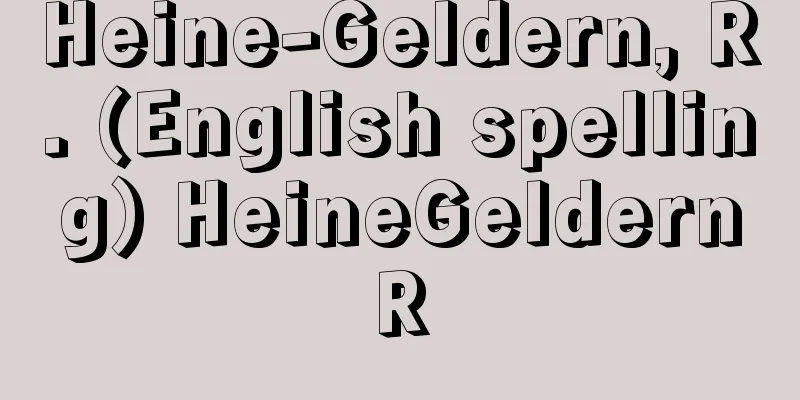Demonstration - Demonstration

|
It is a demonstration in which people with certain demands gather together to strengthen the will necessary to achieve those demands, and by demonstrating the power of group solidarity, they exert psychological pressure on the other party while at the same time appealing to general public opinion for the legitimacy of their demands and claims. It is often abbreviated to "demonstration." Demonstrations are an important means of expressing the will of workers and ordinary citizens in modern times, and because they can strengthen unity and elevate movements, they are often used at important turning points in movements. There are many different types of demonstrations, and it is not very meaningful to classify them, but in terms of the form of demonstrations, demonstration rallies and demonstration marches are the most common. In the past, demonstrations were thought to have the most common denominator of raising flags, holding placards with demands written on them, wearing headbands, and repeating demands in the form of chants, but today the methods of expression have become extremely diverse. There are many different forms and methods of demonstrations, but the zigzag demonstration (snake dance) and French-style demonstration (a demonstration where people spread out and march across the entire road) left a strong impression on many people because of their interesting expressions. Some say that as the methods and channels for expressing the demands of the general public become more diverse, demonstrations are losing their effectiveness. This is probably because demonstrations rarely produce visible results. However, the psychological pressure that demonstrations exert on rulers remains strong. There is a famous story of how, towards the end of the Vietnam War, then-US President Richard Nixon became nervous about the voices of protest from deep within the White House. If we take the term "demonstration" in its broadest sense, it can also include demonstrations held by those in power or by a country with the purpose of displaying their power. In fact, such demonstrations have been held quite frequently throughout history, as seen in the example of the Nazis. However, those in power also try to restrict truly popular demonstrations, demonstrations that are a form of active self-expression by the people, from the perspective of security measures. In Japan, since the establishment of the Public Security Ordinance in Fukui City in 1948 (Showa 23), many local governments have made it mandatory to notify and obtain permission in advance for demonstrations. In order to make demonstrations more effective under these circumstances, steady efforts are needed to gain social support for the movement, and there are calls for the establishment of self-discipline among demonstrators. What is most important is to innovate in ways that allow everyone to participate, in ways of expressing the movement, and in ways of strengthening unity. This is illustrated by the fact that anti-nuclear demonstrations have spread since the accident at the Fukushima Daiichi Nuclear Power Plant in 2011, and the significance of demonstrations has been reaffirmed. [Yazawa Shujiro] [References] | |Source: Shogakukan Encyclopedia Nipponica About Encyclopedia Nipponica Information | Legend |
|
一定の要求をもつ人々が、その要求を達成するのに必要な意思を固めるために結集し、集団の団結力を誇示することによって、相手方に心理的圧力をかけると同時に、一般世論にもその要求・主張の正当性を訴えかける示威運動のことをいう。簡略化してデモと表されることが多い。 デモは近・現代における労働者や一般市民大衆の意思表示の重要手段であり、それによって団結を強め運動を高揚させることができるので、運動の重要な転換点で多用されている。デモの種類はきわめて多様であり、それを分類することにはあまり意味はないが、デモの形式に関しては、デモ集会、デモ行進がもっとも一般的なものである。デモはかつては、旗を立て、要求を書いたプラカードを掲げ、鉢巻をし、要求をシュプレヒコールの形で繰り返していくのが最大公約数であると考えられていたが、今日その表現方法はきわめて多様化している。デモの形態や方法もさまざまであるが、ジグザグデモ(スネークダンス)やフランス式デモ(道路いっぱいに広がって行進するデモ)は、その表現のおもしろさから多くの人々に強烈な印象を残した。 一般大衆の要求の表現方法やそのチャンネルが多様化するとともに、デモはその有効性を失いつつあるという意見も聞かれる。デモが目に見える形で結果をもたらすことが稀(まれ)であるからだろう。しかし、デモが支配者に与える心理的圧力は依然として強いものがあり、ベトナム戦争の末期、当時のアメリカ大統領R・ニクソンは、ホワイトハウスの奥深くでデモ隊の抗議の声に神経をとがらせていたというエピソードは有名である。 デモンストレーションを最広義にとれば、そのなかに権力者や国が行う自らの力の誇示を目的としたデモをも含めることができるだろう。事実このようなデモは、ナチスの例を持ち出すまでもなく、歴史上かなり頻繁に行われてきた。しかしその一方で権力者たちは、真に大衆的なデモ、民衆の積極的な自己表現としてのデモを、治安対策という視点からなんとかして規制しようとする。日本では1948年(昭和23)の福井市における公安条例の制定以降、多くの自治体でデモの事前届出・許可が義務づけられている。このようななかでデモをより有効なものにしていくためには、運動に対する社会の支持を獲得する地道な努力が必要であり、かつまたデモ参加者の自己規律の確立が叫ばれている。なによりもたいせつなのは、だれでもが参加できるようなくふう、運動の表現方法、団結強化の方法の自己革新などであろう。そのことを例証しているのは、2011年(平成23)の福島第一原子力発電所の事故後に、脱原発デモが広がりをみせ、デモの意義が再認識されていることである。 [矢澤修次郎] [参照項目] | |出典 小学館 日本大百科全書(ニッポニカ)日本大百科全書(ニッポニカ)について 情報 | 凡例 |
>>: Demon - Dämon (English spelling) German
Recommend
For-profit corporation - For-profit corporation
A corporation whose purpose is to make a profit. ...
Arrow feather text - Yabanemon
A continuous pattern of wide V-shapes. Arrow feath...
Cancel - Kaijo
When one of the contracting parties unilaterally ...
Workers' Accident Compensation - Workers' Accident Compensation
Compensation received by injured workers or surviv...
Katholikos (English spelling) [Greek]
A title for the head used in some churches in East...
Formwork concrete block construction - Formwork concrete block construction
...What is generally referred to as block constru...
Qing Dynasty Administrative Law - shinkokugyoseiho
A book about the administrative system of the Qing...
Kayibanda, G. (English spelling) KayibandaG
...The Hutu formed the Hutu Liberation Movement P...
Kinorhyncha
…The mouth is connected to a digestive tract, but...
Cutaneous tuberculosis
Cutaneous tuberculosis is large, Genuine ( New li...
The School of Saint Victor
A general term for the people who gathered around ...
Kamari
〘Noun〙 A ninja scout. A large group is called a &q...
Fasciola hepatica
…A type of parasite belonging to the family Fasci...
Whinfield, JR
…the American name for polyethylene terephthalate...
Kazekusa - Wind
A perennial grass of the Poaceae family (APG clas...









